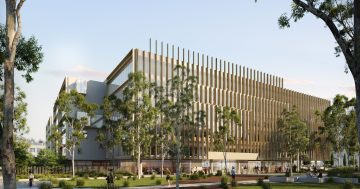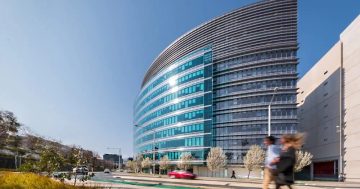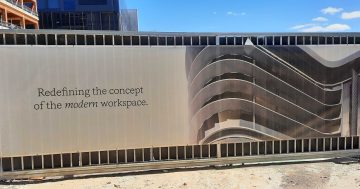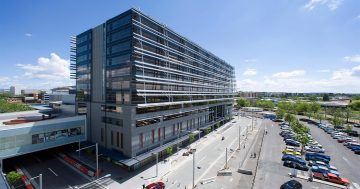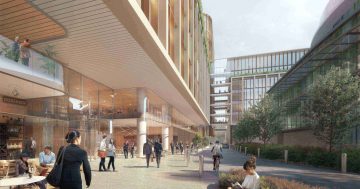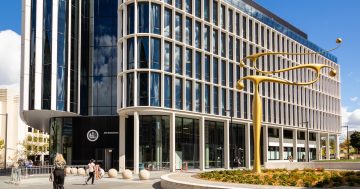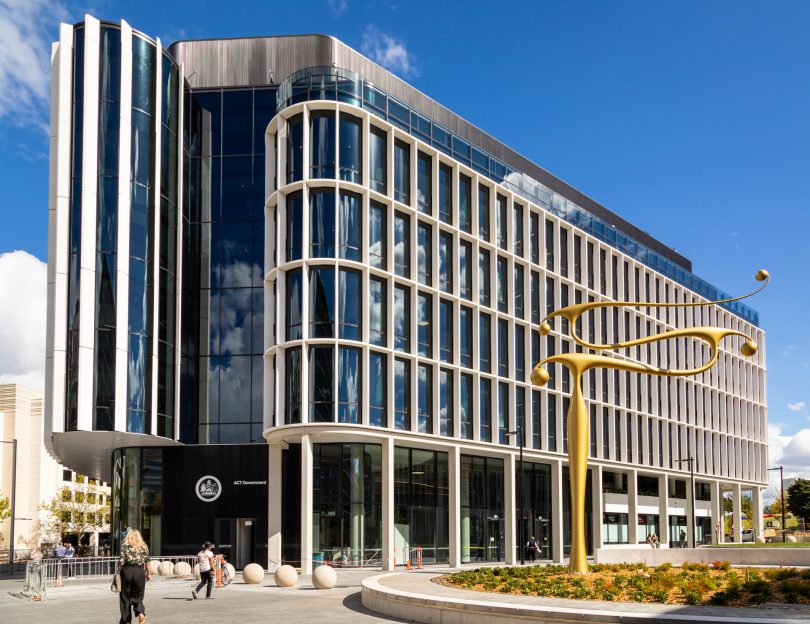
The new ACT Government building in Civic is designed for modern work practices. Photo: Michelle Kroll.
ACT public servants in the new state-of-the-art government offices in the city and Dickson who may be struggling to secure a work desk are about to get some help.
The new offices accommodate about 3000 staff but contain only 2500 workstations as part of the adoption of Activity Based Working, which allocates eight workstations for every 10 staff, presuming that at any time on any given day a proportion of the workforce will not be in the office.
Staff, many of whom may be working some of the time from home, are not allocated workstations except where there is a clear need identified, and need to book a desk.
Now the government will pay Serraview more than $700,000 to implement a digital wayfinding system that will allow staff to manage desk and room bookings as well as provide data on how the buildings are being used.
The contract includes development, implementation, licensing arrangements and support for three years.
The system will also allow the ACT Government to monitor how the workplace is used at a near to real-time basis which it says will enhance its ability to make strategic decisions about its office space and and ensure buildings are operating at optimal efficiency.
“The capability is also scalable to enable other buildings and sites to be incorporated which will allow future workforce flexibility and space planning,” the spokesperson said.
“Understanding how ACT Government office buildings are being used enables the Territory to use its resources more efficiently and to accurately forecast office accommodation requirements.”
The new buildings have been designed to support contemporary work practices including Activity Based Working and in addition to the workstations, the new working environments feature a range of alternative work settings such as dedicated quiet areas, dozens of meeting rooms, and communal break-out areas.
“A deliberate design feature is a significantly higher proportion of meeting spaces than staff had access to in their old accommodation,” the spokesperson said.
The government has been transitioning its offices to what it sees as a more efficient and flexible operating model since 2015, and the spokesperson said COVID-19 pandemic highlighted the importance of flexible working options and hybrid working models.
“With reduced capacity in both buildings due to physical distancing requirements, wayfinding capability supports employees to plan their physical attendance in the office and ensure timely access to resources and colleagues when in attendance through the use of a convenient app or browser,” the spokesperson said.
The government believes this is the way of the future saying it will continue to support flexible working beyond the pandemic and extend the model to other work sites.
The spokesperson said the 8:10 ratio of workstations to staff had been tested across multiple pilot environments and a number of sites had adopted Activity Based Working environments, of which the Dickson and Civic buildings are the most recent.
“Our data collection through occupancy surveys over a significant period of time has consistently demonstrated the efficacy of the 8:10 ratio,” the spokeperson said.
Many ACT public service staff are still working from home or combining both home and office settings as part of a ‘hybrid’ work pattern.
“These patterns of work can vary significantly between directorates based on the specific workplace, service delivery and working environments of the directorate,” the spokesperson said.
Activity Based Working uses flexible working spaces that allow employees to choose a place or space that matches the particular activity, and is not considered to be “hot desking”, which is non-allocated seating in a traditional office environment.
Serraview’s website says it provides a workplace management solution designed to optimise space utilisation and create efficient and effective people-centric workplaces.












